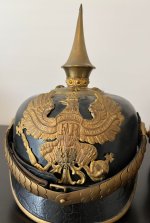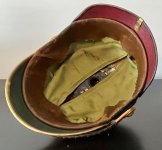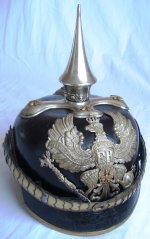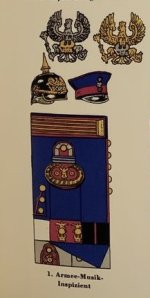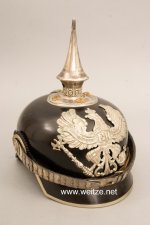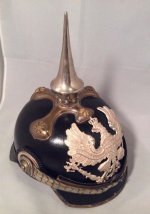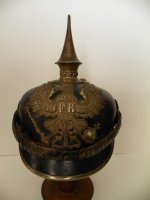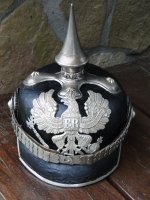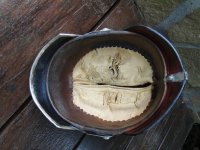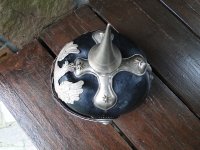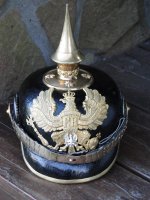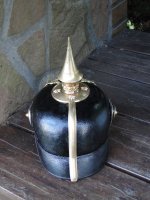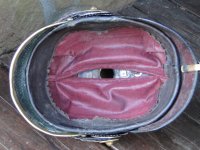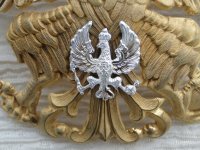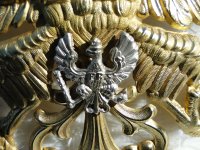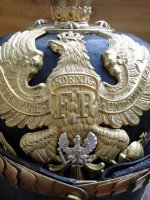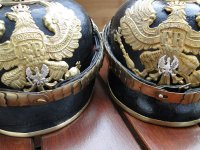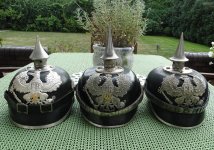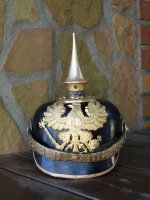I understand it as that all officials should wear such helmets since 1908. But that's not what the mentioned regulation says? By the October 1908 regulations, selected military officials continued to wear a squared front visor and cross-fitting on the helmets, but other officials wore a round front visor and a round spikebase.
Sandy,
the 1908 regulations were just an update. They did not introduce anything radically different from what was worn before. They did of course mention the small "Beamten-Adler" introduced in 1905. The square peaked helmet continued to be worn by those branches of the military administration that had worn it before (Intendance, military justice, pharmacists, provisions, hospital, garrison administration officials etc.). And similarly the "infantry style" helmet of the Zahlmeister, veterinary officials and musikinspizienten continued to be worn by those individuals.
To recap:
Square peak "dragoon style":
War Ministry - Gold fittings, no scroll, FR, silver shield, domed chin scales
War Ministry technical officials - Silver fittings, no scroll, FR, gold shield, domed chin scales
War Ministry Senior Staff Apothecary - Silver fittings, no scroll, FR, gold shield, domed chin scales
Intendance - Silver fittings, no scroll, FR, gold shield, domed chin scales *
Military Justice - Silver fittings, no scroll, FR, gold shield, domed chin scales
Military Construction officials - Silver fittings, no scroll, FR, gold shield, domed chin scales
Technical officials of the Technical Institute - Silver fittings, no scroll, FR, gold shield, domed chin scales
Apothecary officials - Silver fittings, no scroll, FR, gold shield, domed chin scales
Provisions Offices officials - Gold fittings, no scroll, FR, silver shield, domed chin scales
Garrison Administration - Gold fittings, no scroll, FR, silver shield, domed chin scales
Telegraph officials - Silver fittings, no scroll, FR, gold shield, domed chin scales
Clothing Offices officials - Gold fittings, no scroll, FR, silver shield, domed chin scales
Hospital officials - Gold fittings, no scroll, FR, silver shield, domed chin scales
War Treasury field officials - Gold fittings, no scroll, FR, silver shield, domed chin scales
* Intendance officials with the equivalence of general officers' rank wore a general officers' helmet with the small gold shield of the officials beneath the Guard star. Extremely rare I would have thought!
Round peak "infantry style"
Music Inspectors - Gold fittings, scroll, FR, silver shield, domed chin scales
Veterinary officials - Gold fittings, scroll, FR, silver shield, domed chin scales
Zahlmeister - Silver fittings, scroll, FR, gold shield, domed chin scales
Waffenmeister - Gold fittings, scroll, FR, silver shield, domed chin scales, spike base studs
Note. Prior to the formation of the Fortress construction officers' branch, fortress construction officialsalso wore the "dragoon" style helmet with silver fittings.
Regards
Glenn

